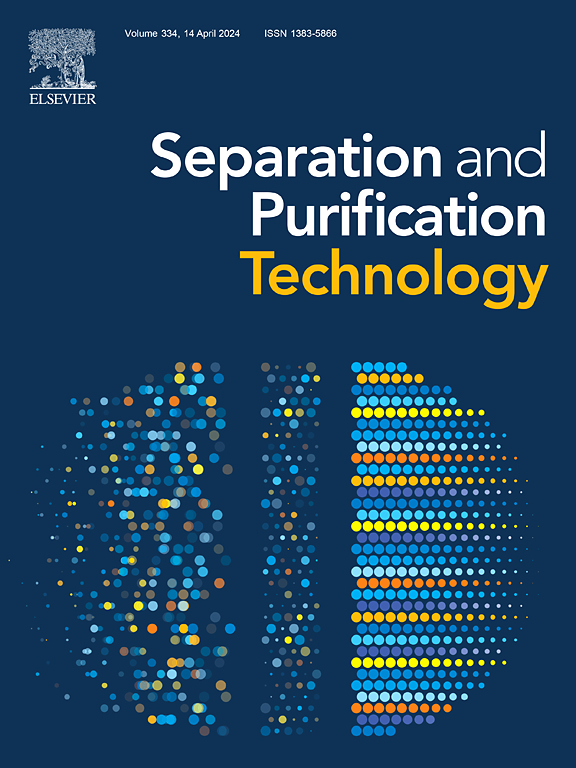Development of an efficient simulated-moving-bed adsorption process for separation of 1,3-propanediol and glycerol coming from cyanobacterial fermentation based on photosynthesis and Calvin cycle
IF 8.1
1区 工程技术
Q1 ENGINEERING, CHEMICAL
引用次数: 0
Abstract
With regard to microbial fermentation for the production of 1,3-propanediol (called “PDO” hereafter), there has been a particular interest in Calvin cycle-based cyanobacterium fermentation method, which has the advantage of not producing by-products other than PDO. To activate the industrial production of PDO based on this method, it is essential to establish a reliable process that can efficiently separate “PDO produced through reduction of glycerol” from “unreduced glycerol”. In response to this issue, this study aimed to investigate the possibility of applying a simulated-moving-bed (SMB) technology to the continuous separation of PDO from glycerol under the concentration ranges of PDO and glycerol formed through the considered fermentation processing. First, for such PDO-glycerol separation, it was found that the adsorbent consisting of only hydrophobic backbone could provide better selectivity than the type of adsorbents previously used (i.e., hydrophobic backbone-based cation exchange resins). Based on the adsorbent selected through this procedure, the intrinsic parameters of PDO and glycerol were determined and then utilized in the optimal design of the PDO-separation SMB process (called “PDO-SMB” hereafter). The results showed that a three-zone open-loop configuration based on the split of extract-port’s upstream zone and separation zones was suitable for the PDO-SMB structure, under which its operating conditions were optimized in the direction of maximizing PDO yield and glycerol removal-rate. Through the operation of such optimized PDO-SMB process, the continuous separation of PDO from glycerol under the target concentration ranges was successfully achieved, which was confirmed both theoretically and experimentally. It was further found that the introduction of a two-substep operation mode and two extract ports into the PDO-SMB could help significantly improve the PDO-SMB productivity without reducing its separation performance.求助全文
约1分钟内获得全文
求助全文
来源期刊

Separation and Purification Technology
工程技术-工程:化工
CiteScore
14.00
自引率
12.80%
发文量
2347
审稿时长
43 days
期刊介绍:
Separation and Purification Technology is a premier journal committed to sharing innovative methods for separation and purification in chemical and environmental engineering, encompassing both homogeneous solutions and heterogeneous mixtures. Our scope includes the separation and/or purification of liquids, vapors, and gases, as well as carbon capture and separation techniques. However, it's important to note that methods solely intended for analytical purposes are not within the scope of the journal. Additionally, disciplines such as soil science, polymer science, and metallurgy fall outside the purview of Separation and Purification Technology. Join us in advancing the field of separation and purification methods for sustainable solutions in chemical and environmental engineering.
 求助内容:
求助内容: 应助结果提醒方式:
应助结果提醒方式:


